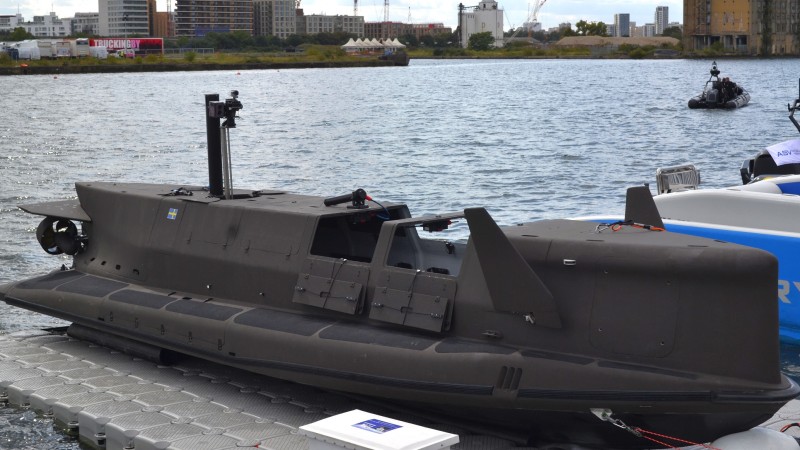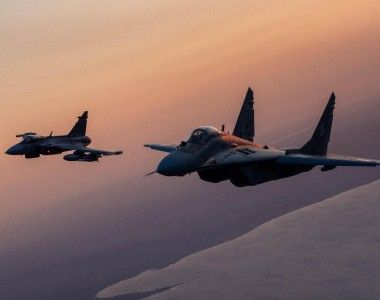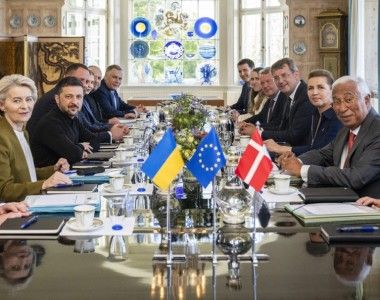Polish “Orka” Submarine Procurement Gains Weight (and Bids)

Photo. M. Dura
11 potential bidders expressed their willingness to participate in the “Orka” submarine procurement programme pursued by the Polish Navy. Only 7 out of them have relevant experience, while three have experience in providing a transfer of submarine technologies to foreign countries.
According to the information we received from Kacper Bakuła, a specialist working at the Armament Agency, "The following entities placed their requests to participate in market consultation regarding the Orka new class submarine (OPNT):
- Hyundai Heavy Industries Co, Ltd.;
- SAAB Technologies Poland Sp. z o.o.;
- Navantia;
- Naval Group;
- ThyssenKrupp AG;
- Hanwha Ocean Co, Ltd;
- FINCANTIERI S.p.A.;
- Aycomm Sp. z o.o.;
- Volue Industrial IoT;
- Babcock International Group plc,
- JFD.
What changed?
The brief information listed above suggests that the tactical and technical requirements referring to the new submarines for the Polish Navy have undergone, or will undergo a change, in comparison to the previous "edition" of the Orka programme launched by the Polish Ministry of Defence. Entities that offer solely large, Ocean-going submarines want to participate in the procurement. Meanwhile, the previous assumption had stipulated Poland only needs smaller subs (with the ridiculous requirement of their length being less than 70 meters), primarily designed to operate in the waters of the Baltic Sea.

Photo. M.Dura
Hence, during the first iteration of the “Orka” programme, “only” eight entities expressed their interest in the undertaking organized by the Armament Inspectorate (now: Armament Agency) - the submission deadline back then had been set on 17th January 2014. These included:
- French DCNS Group, with HQ in Paris, submitting its proposal jointly with MBDA, and the Stocznia Remontowa NAUTA S.A., based in Gdynia;
- Spanish Navantia Shipyard, based in Cartagena;
- German Thyssenkrup Marine Systems GmbH, based in Kiel;
- Swedish FXM defence technologies export promotion agency, submitting a bid by a consortium formed by the Kockums shipyard, and the FMV (Forsvarets Materielverk) defence administrative body;
- KENBIT Sp. j., based in Warsaw;
- SAAB Polska, based in Warsaw;
- Thales Polska Sp. z o.o., based in Poznań;
- Kongsberg Defence & Aerospace AS, based in Norway.
In reality, only 4 entities were offering submarine designs: Swedish agencies and Saab, French DCNS (currently: Naval Group), German ThyssenKrupp Marine Systems, and Spanish Navantia. The Swedes proposed the new A26 design, also expected to be procured by the Swedish Navy. The Germans were "flexible", first offering the legacy Type 214, and then the latest Type 212A. The French, meanwhile, offered the Scorpène-class submarines. The offer was quite attractive, as Poland could have procured these submarines in a package with the MdCN cruise missiles.
Navantia quickly dropped out, as the S-80 design offered by the Spanish company faced technical problems, and the vessel had to be lengthened not to sink. Ultimately, the S-80 Plus submarine was born (Isaac Peral class), with a submerged displacement of 3426 tonnes, and a hull that is 81.5 meters long.
The announcements made by some politicians and members of the military, suggesting that other entities may join the procurement, did not materialize - statements were being made, suggesting that "South Korea has interesting solutions in the domain of building submarines, decisions on the development of submarine technologies have been made by the Turks, with whom it is worth to engage in a conversation on industrial defence cooperation". What the military experts had rejected back then, focusing on 3 European bidders, now was yet again taken into account.
Who can deliver what?
Fortunately, the press release issued by the Armament Agency suggests that three key entities taking part in the previous procedure are still interested - these include the Naval Group from France, tkMS from Germany, and Saab Kockums from Sweden. All three businesses above had got themselves ready to face any changes that could potentially be implemented by the Armament Agency when it comes to the requirements.
Poland may receive what has been verified by the Navy - well-known, and assessed submarine designs. This may accelerate the procurement process. The options include Scorpène, 212A, and A26. If the Polish Navy decides to procure larger, Ocean-going vessels, the French may offer the Barracuda (based on the Marine Nationale's nuclear Suffren-class), the Germans may offer the 212CD (selected in the German-Norwegian procurement) or the 212CD-E (offered by tkMS for the Netherlands), while the Swedes may offer the C718 class submarines (offered by Saab for the Netherlands).
U212NFS will also be an offer easy to scrutinize - most probably this will be the vessel offered by the Italian Fincantieri shipyard. The vessel is based on the German 212A submarines, but it features Italian enhancements and subsystems. Three submarines as such are being built for the Italian Navy now, and it is estimated that the last example may cost as little as EUR 500 million - which is a major advantage of the Fincantieri’s bid.
Navantia also placed its bid in the current iteration of the Orka procurement. The shipyard has its S-80 Plus "Isaac Peral" submarine ready for sea trials. It would be possible then to verify how that vessel behaves, especially considering the changes made to the baseline Scorpène design and the evolved ship's combat system.
South Korean entities, Hyundai Heavy Industries Co, Ltd., and Hanwha Ocean Co, Ltd. (previously known as Daewoo Shipbuilding & Marine Engineering Co., Ltd. – DSME), are a big unknown. During our conversations with them, during DSEI 2017 in London, we found out that South Korea had only been able to offer the DSME 1400 for the Orka programme, based on the German 209/1200 design - obsolete in comparison to what was being proposed by the European entities.

Photo. M.Dura
Six years ago it was pointed out that the latest KSS-III (Dosan Ahn Chang-ho) or San Won II (based on the German Type 214 design) cannot be offered to Poland. The situation could have changed since then. Meanwhile, the KSS-III one of the most interesting design for the Polish Navy, as it is one of a few conventional submarines that remains capable of vertically launching missiles when submerged.
The KSS-III vessels are offered both by Hyundai, and Hanwha Ocean Co. Ltd. One should remember that these submarines are relatively large (3,600 tonnes of displacement, 89 meters long).
The remaining entities (UK-based Babcock, Norwegian Volue Industrial IoT, UK-based JFD, and the Polish Aycomm company) do have relevant military procurement experience, but they do not offer ready, “off-the-shelf” designs that would comply with the preliminary requirements of the Orka programme right away. Their requests sent to the Armament Agency shall be viewed as an expression of willingness to cooperate, within the framework of the Orka project.
A preliminary declaration made by Minister Mariusz Błaszczak in May this year may be a major roadblock for the businesses involved; he stated that the main goal of the Orka programme is to "procure submarines with a transfer of relevant technologies that we want to acquire via an offset order". Only three out of 11 bidders have relevant technology transfer experience here: tkMS from Germany, Naval Group from France, and Saab from Sweden.



